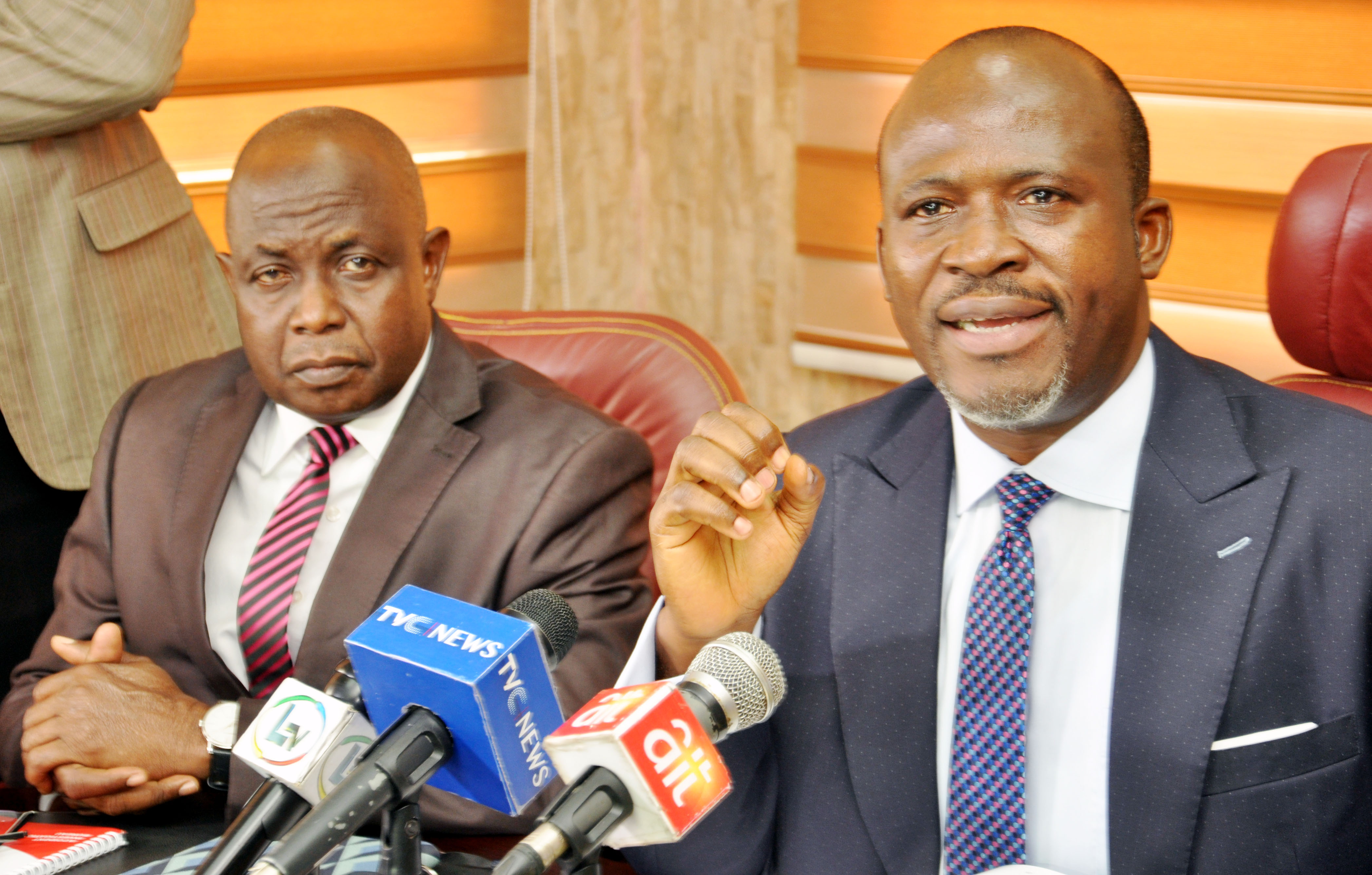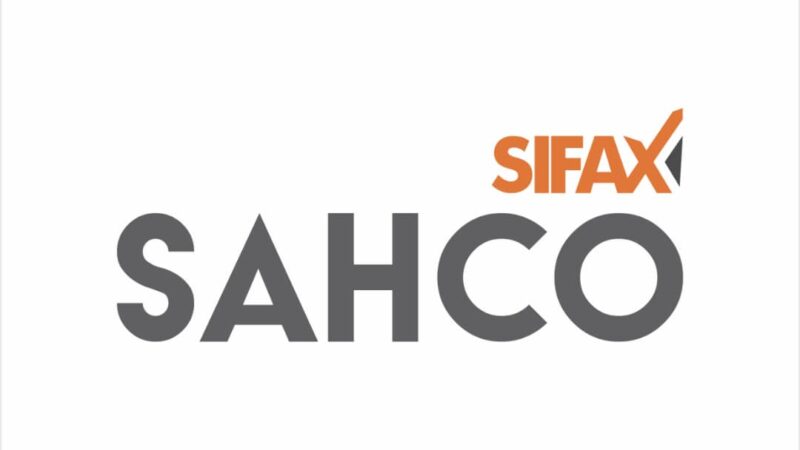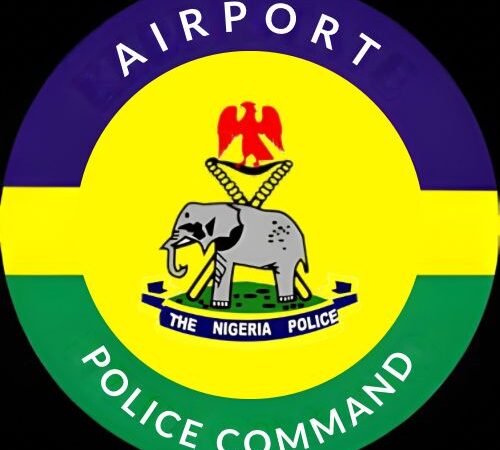AIB releases 6 accident, serious incident reports

…calls for expedient action on safety recommendations

The Accident Investigation Bureau (AIB) has, today (24th April, 2019), released 6 final accident and serious incidents reports, as it has taken a swift stance on its statutory onus since 2017.
Commissioner of the Bureau, Engr. Akin Olateru, said while the reports are important in preventing future occurrences, it behooves the stakeholders concerned to take swift actions on the safety recommendations with a view to drawing safety lessons that could be incorporated in the Civil Aviation Regulations and mitigate future events of the same kind.
“Safety is of great importance to us at AIB and our Investigations are geared towards having a safe airspace for air travellers globally. These reports are collectively a strong pillar of safety in the aviation industry and timely release is as critical as Accident Investigation itself.
“The purpose of accident investigation, however, is not to apportion blame or liability but to prevent future recurrence of similar incidents. Such preventive mandate, however, cannot be achieved without relevant stakeholders having timely access to accident investigation reports and draw safety lessons that can be applied to mitigate future reoccurrence of similar events,” Olateru said.
According to him, the 6 Final Reports have generated a total of 24 Safety Recommendations, which are addressed to the regulatory body, affected airlines and airport operators and foreign agencies, adding that with these six reports, the Bureau now has a total of 46 Final Reports and 178 Safety Recommendations since the inception of AIB.
One of the reports was on the Accident involving a Bristow Helicopters (Nigeria) Limited Sikorsky S76C++ Helicopter with nationality and registration marks 5N-BQJ, which occurred at 77NM offshore from Murtala Muhammed Airport on 3rd February 2016.
The Bureau said it was notified of the incident on the 3rd of February, 2016. And after diligent investigations into the possible cause(s) of the accident, the Bureau revealed that the ill-fated helicopter was a charter flight operated by Bristow Helicopters Ltd.
It departed Murtala Muhammed Airport, Lagos (DNMM) with 11 passengers and 2 crew members for Erha Floating Production Storage Off-loading (FPSO) helideck.
The Captain was the Pilot Flying (PF) while the First Officer was Pilot Monitoring (PM) on this leg of the flight.
Other details captured in the report after investigation reveal that “The take-off and climb-out was normal. But few minutes into the flight, the Captain observed an unusual vibration of the aircraft and made a remark about this to the First Officer. About fifteen minutes later, the crew also reported that the Digital Auto Flight Control system (DAFCS) and TRIM FAIL lights illuminated twice and were reset.
“The No. 1 autopilot decoupled on both occasions. Also, according to the PM, a passenger seated in the middle row reported perceiving a burning smell. However, the aircraft continued to destination and landed. On ground Erha, the Captain conducted visual checks but could not ascertain the source of the burning smell earlier reported.
“Instrument Meteorological Conditions prevailed at the time and Instrument Flight Rules (IFR) flight plan was filed.
“At 09:50h, 5N-BQJ departed Erha FPSO for Lagos on the second leg of the flight with nine passengers and two crew on board, the First Officer was the PF; estimating LAG 10:40h and endurance of one hour plus thirty-five minutes maintaining an altitude of 3,000ft above mean sea level (AMSL).
“Fifteen minutes into the flight, there were repeated illuminations of ‘TRIM FAIL’ and Digital Automatic Flight Control System (DAFCS) indications. The Emergency Operating Procedure (EOP) was consulted and it recommended that the helicopter be flown hands and feet on the control.
“At 10:08h, about 75NM from LAG, initial contact was made with Lagos Approach. The Pilot Flying (PF) complained of the collective being heavy and the autopilot decoupling. There was loss of power, high rate of descent and decreasing altitude.
“The Captain observed a slight turn to the right and asked the PF to check heading and the PF reported that there was problem with the compass.
“The instrument readings were inaccurate and inconsistent, and the aircraft started drifting to the right.
“At about 66NM on radial 145o from LAG, the Captain made a distress call “MAY DAY, MAY DAY, MAY DAY” on the Approach frequency. Afterwards, the aircraft stabilized at an altitude of 1,500ft AMSL on a NE-E heading and the Captain briefed the passengers that they would have to ditch the aircraft.
“At about 10:19h, 5N-BQJ made a controlled landing on water at approximately 77NM on radial 139o of ‘LAG VOR’. Coordinates of the position was 05o45’43’ N, 004o13’54’ E.”
The investigation also identified causal and contributory factors as follows:
Causal Factor
The crew switched the Compass to “FREE” DG mode for Landing on the helideck at Erha FPSO, and did not return to the “SLAVE” mode after take-off, which caused the trim to fail to cut off consistently, which in turn disengaged the autopilot as a result of the unsynchronised heading inputs.
Contributory Factors
- Non-adherence to Company Operations Manual (Part B checklist) as it relates to after take-off checks.
- The crew did not disengage the autopilot to fly the aircraft manually.
The Bureau issued four safety recommendations as follows:
Safety Recommendation 2019-020
Bristow Helicopters (Nigeria) Ltd. should ensure that annual flight recorder readout is carried out for every aircraft in their fleet in accordance with NCAAOrder 001 2014 and ICAO Annex 6 Part III.
Safety Recommendation 2019-021
Bristow Helicopters (Nigeria) Ltd. should ensure that the annual flight recorder readouts records obtained should be preserved with appropriate current data frame layout.
Safety Recommendation 2019-022
Bristow Helicopters (Nigeria) Ltd. should ensure that Flight Crew follow approved checklist items, and procedures at all times.
Safety Recommendation 2019-023
Bristow Helicopters (Nigeria) Ltd. should consider reviewing their procedure for returning crew back to flight duties after staying out of flight duty for any period up to thirty days.
The Bureau also made 16 findings as follows:1
The flight crew were certificated and qualified to conduct the flight in accordance with applicable Nigerian Civil Aviation Regulations (Nig.CARs)
The helicopter was maintained in accordance with the approved maintenance program.
The Helicopter was manufactured in 2007 with total Airframe Hours of 6,867h (As at 02/02/2016).
On the outbound flight to Erha FPSO, a passenger reported smelling a burning smell in the cabin which was not established by the crew on landing.
On the inbound flight to Lagos, the crew reported instrument and flight control problems with repeated TRIM FAIL and DAFCS illuminations.
The crew declared the first May Day call at 66NM to Lagos and later updated it.
Lagos Approach Control could not raise 5N-BQJ and had to rely on other aircraft in the vicinity to relay information.
There were eleven persons on onboard including two crew at the time of ditching.
The aircraft ditched in the Atlantic Ocean at 77NM and radial 1390 from LAG.
The life rafts on the helicopter were deployed with the left life raft slightly damaged.
The Search and Rescue including evacuation of crew and passengers were promptly carried out.
The Helicopter capsized and was later submerged in the salty waters of the ocean while the emergency flotation devices prevented the helicopter from sinking immediately.
One of the two flotation bottles under the crew seats was discharged.
There was no evidence of fire outbreak before and after ditching.
Defects were discovered in the Flight Data Recording Systems.
Annual Flight Recording Readouts for the aircraft were not carried out.
Olateru called on the stakeholders to expedite actions on the safety recommendations and act on lessons learnt.
“While we are committed to prompt release of accident investigation reports, we call on all stakeholders to expedite actions on safety recommendations from our reports and act on lessons learnt from the investigations. This is the least they can do to complement AIB’s efforts at enhancing air safety, without which a sustainable aviation development cannot be assured,” he said.







